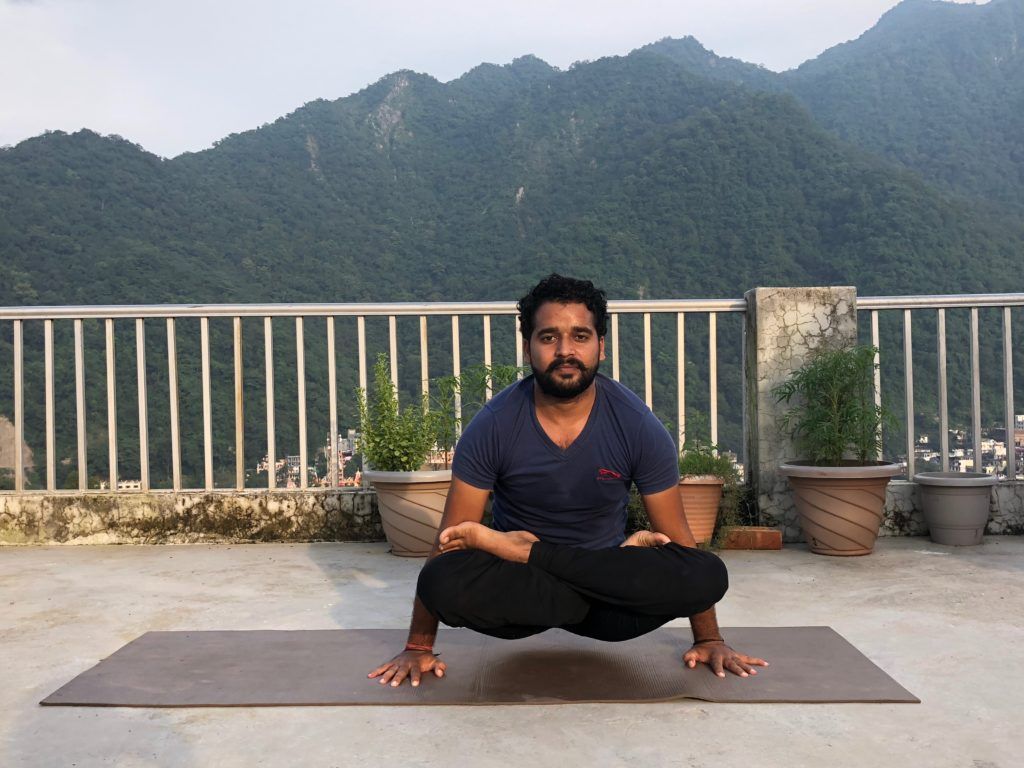
Lolasana (Swinging Pose) is an advanced asana. To master this posture, one needs to be able to sit in Padmasana (Lotus Pose) without any discomfort.
The name of the posture originates from the Sanskrit term Lol which means Swinging.
How to do Lolasana
- Sit in Padmasana
- Place the palms on the floor besides the thighs
- Separate the fingers equally
- Inhale deeply
- Raise the whole body from the floor, balancing only on the hands
- Swing the body backward and forward between the arms
- Lower the buttocks and legs to the ground
- Rest in the sitting position
- Repeat this with the legs crossed the other way
Note: Try to gaze at one point for better concentration.
About this posture and its practice
While attempting a new posture, you should always keep in mind to incorporate a suitable warm-up prior practice. In hatha yoga, the warming-up part is called Pawanmuktasana or Energy Releasing postures. A gentle warm-up helps you to prepare your body, release stiffness and smoothen the joints, tendons and muscles. Lolasana requires strength in your arms, shoulders, wrists therefore you could pracise a few shoulder and wrist rotations. If you cannot sit in Padmasana (lotus seat) yet, try butterfly pose and gently move your knees up and down. This helps to open the hips.
Benefits of Lolasana
- Strengthens the arms, wrists and shoulders
- Tones the abdominal muscles
- Opens the chest
- Generates control and balance
- Improves concentration
Contra-indications:
This posture should be avoided if you suffer from heart conditions, high blood pressure , prolapse, hernia or back pain. It’s a very strenuous posture.
Yoga Asana Practice at Gyan Yog Breath
Our Gyan Yog Breath Team publishes weekly asana tutorials for you to help you get into the right practice and understand about various benefits and contra-indications of postures.
Sometimes, reading about a practice can awaken questions and the desire to learn yoga on a much deeper level.
Therefore, we have established some comprehensive Yoga Alliance registered Yoga Teacher Training Programs that aim to guide you into advanced and higher levels of yoga.
The beginner training is called 100 Hour Yoga Teacher Training or 200 Hour Yoga Teacher Training. With experienced teachers and challenging classes, you can finally improve your yoga practice safely and with joy!
The Benefits of a Yoga Practice with an Experienced Teacher:
- You can to be picked up from your current level
- Avoid serious injuries
- Gain maximum benefits through the use of explanations, adjustments and props
- Grow your practice steady and strong
- Get insider tips about diet, life-style and yoga-related practices such as Pranayama and Meditation
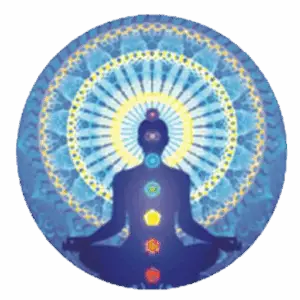
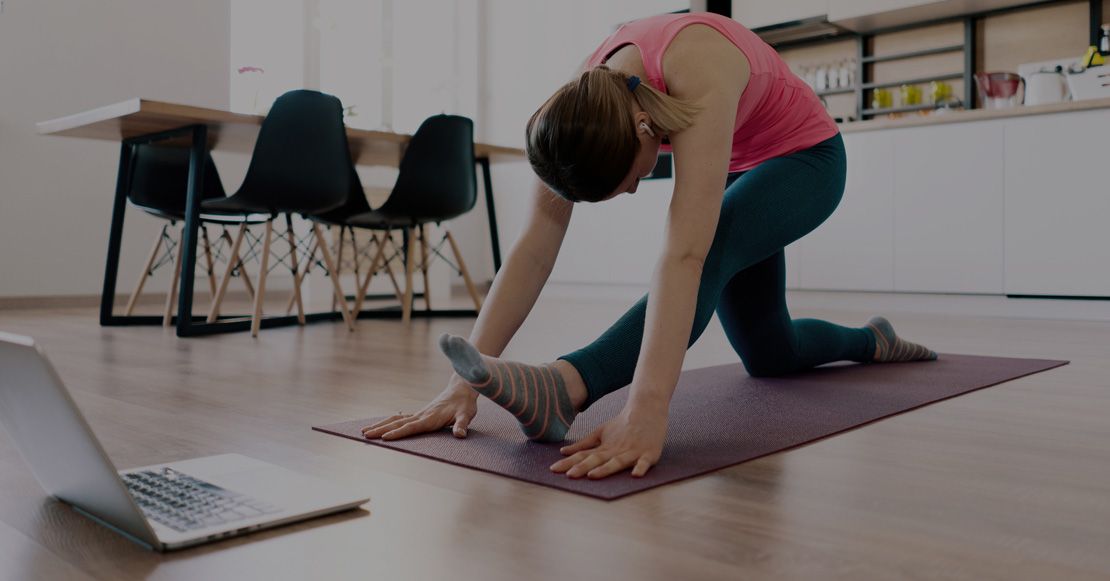
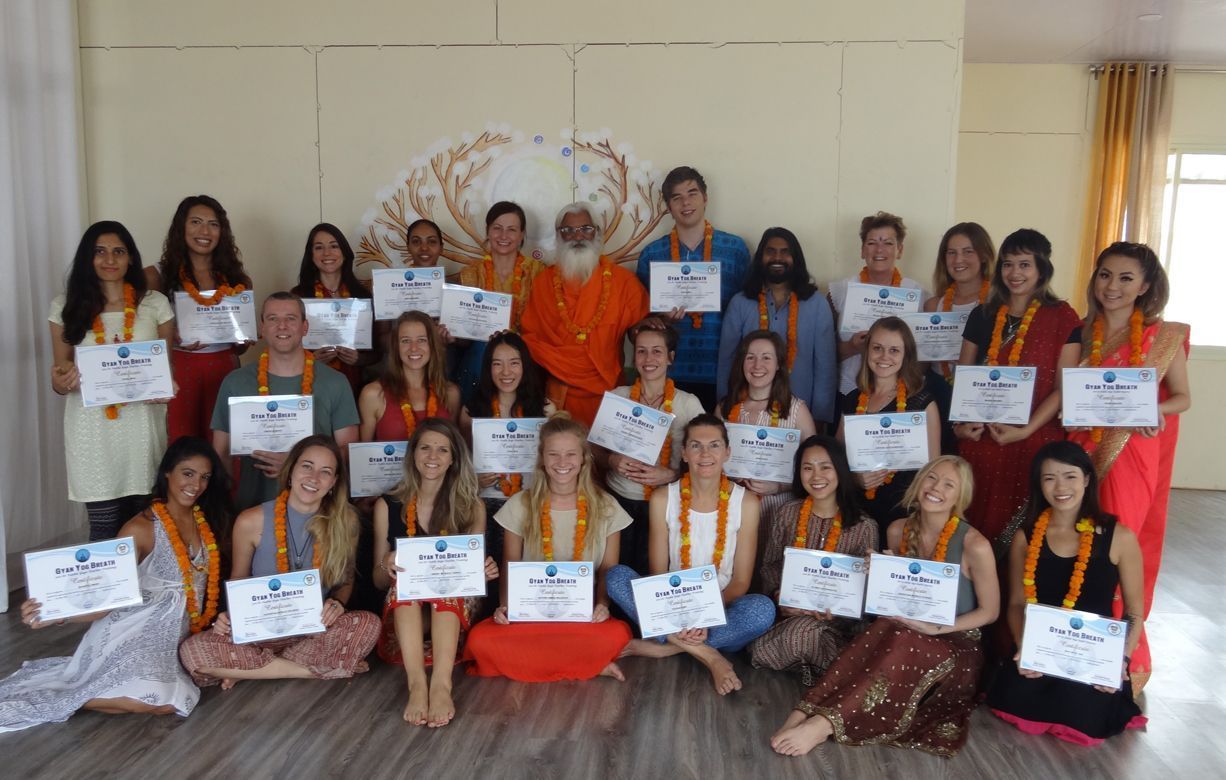


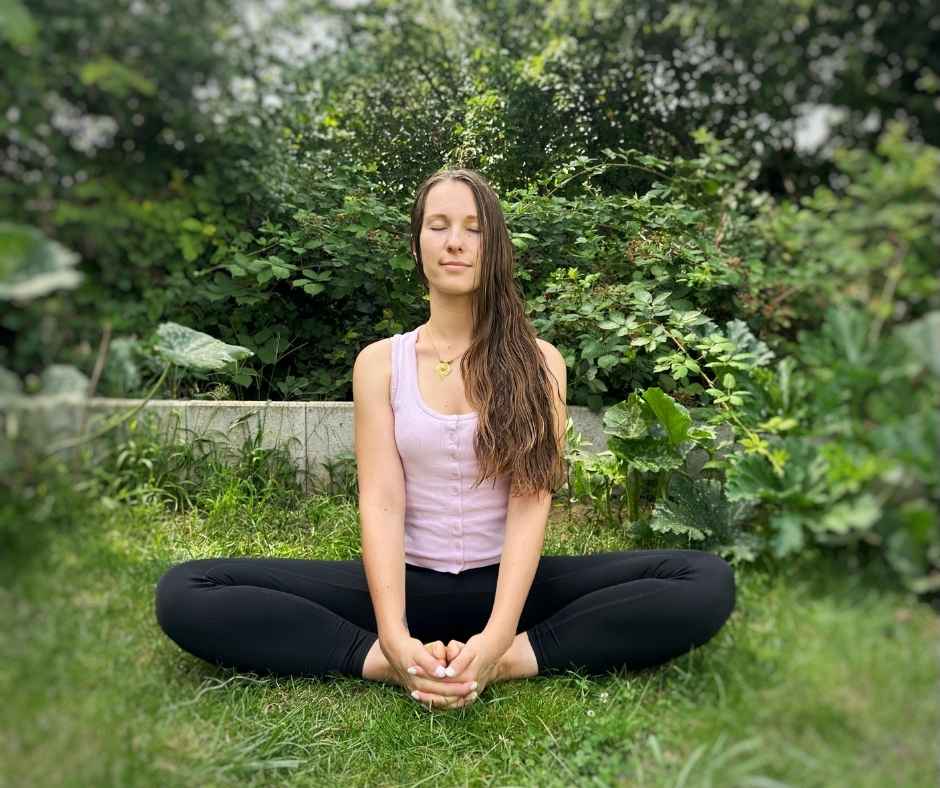
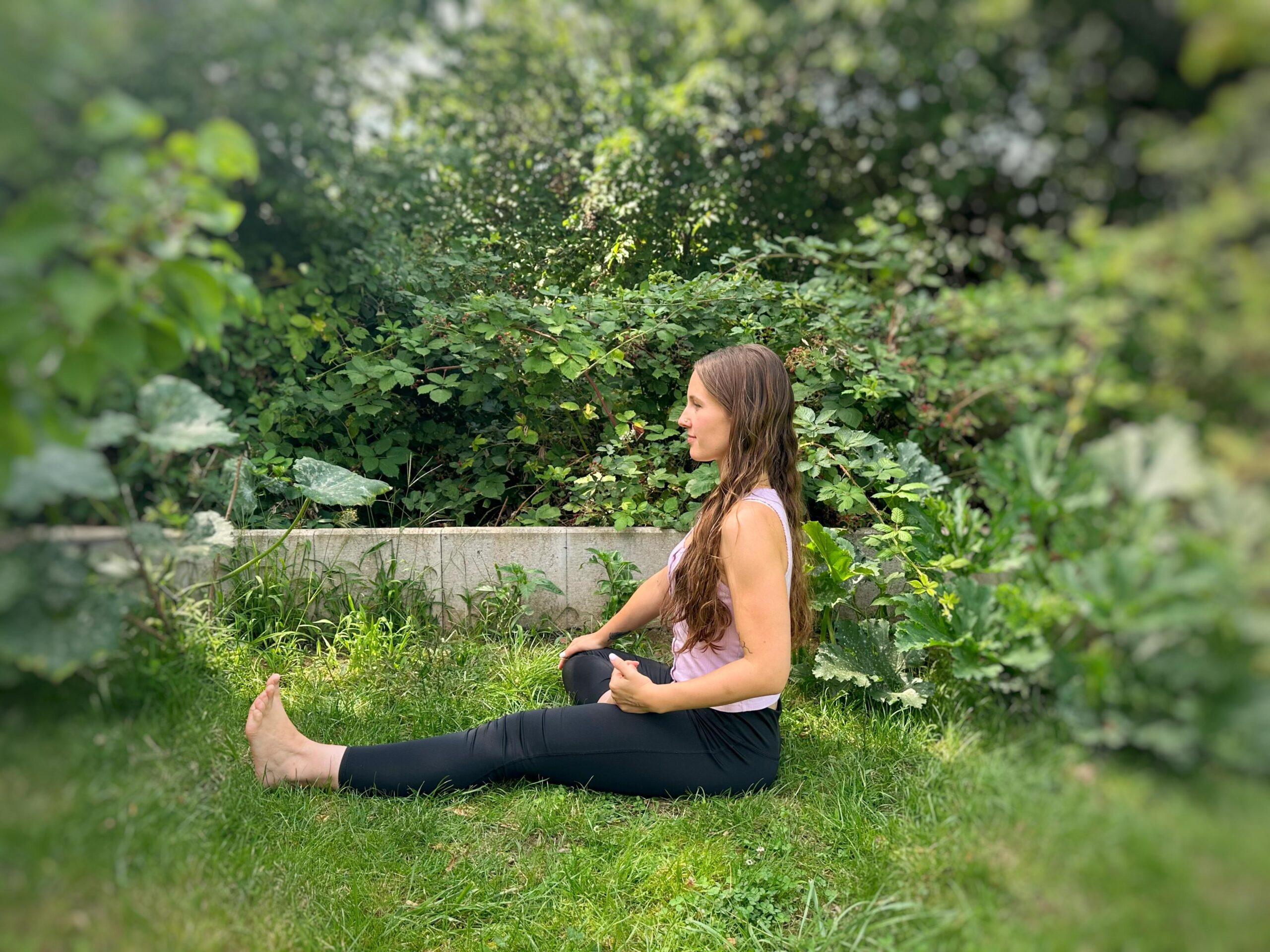

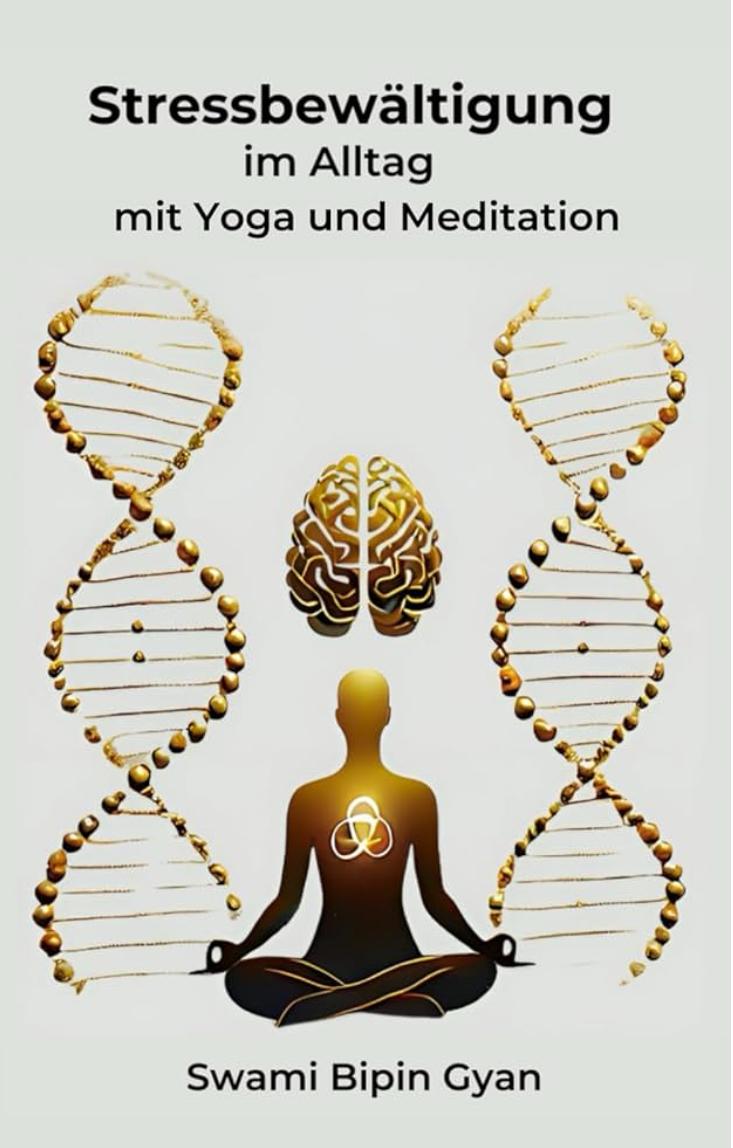
4 Responses
Hi there I really appreciate your blog posts especially the weekly Asana tutorial. I try to practice every day but sometimes I don’t find the time due to my busy work. I hope to join your 200 hour yoga teacher training in may this year because yoga has been my passion for a long time already. I practice for the last 2 years now. Does this make me eligible to join your yoga teacher training course ? I read that the 200 hour TTC is for beginners/ intermediates… well, all the best for you and hopefully see you soon!
Jane
Namaste Jane, thats very nice of you! Thanks 🙂 Yes, you can join our 200 hour yoga teacher Training in india as a beginner/intermediate. Our 200 hour yoga teacher Training is for anyone who wants to deepen their yoga practise and expand their knowledge and understanding about yoga. It’s especially very beneficial if you work a lot/ wantto release some tensions and stress. Please let us know if you have any more questions! We would be happy to meet you this year!
Love and Light,
Your Gyan Yog Breath Team
When I grew up I did athletics so my body is naturally flexible. Starting with yoga combined my passion for physical movement and challenge with inner peace. I am now feeling ready to join your 200 hour yoga teacher training in India. For me it is very important to learn about myself in a supportive environment. The feeling I get from visiting your website, instagram and fb multiple times now is very positive. If still available I would like to join your 200 hour yoga teacher training in May 2018. I come from Germany but lived in the US until recently. Hopefully, I will hear from you soon.
Namaste Ina, at Gyan Yog Breath, we always aim to provide a safe and supportive environment for our students in order to learn well and blossom. We keep our student numbers limited so that our students can grow in a family-like space without feeling anonymous. You are of course welcome to join our 200 hours yoga teacher Training in May 2018. We still have availability & you can book your seat here:
https://gyanyogbreath.com/advance-registration/
We think that you will fit in our ashram and 200 hours yoga teacher Training very well!
Please DM us if you have any more questions!
Love and Light
Your Gyan Yog Breath Team